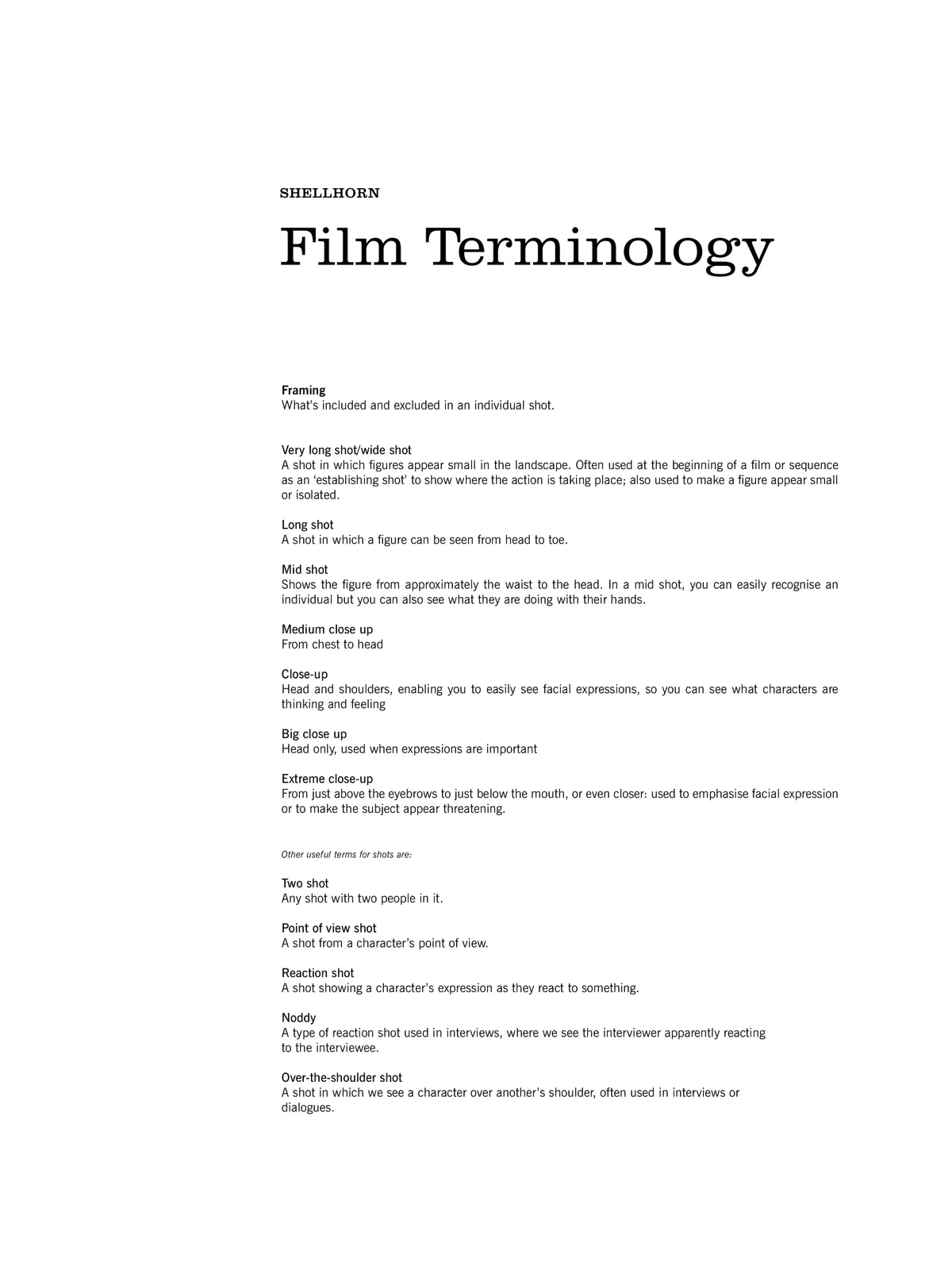Film Terminology - Summary
Cinematic terms, also called film terminology, are a type of vocabulary that is used to describe or identify what happens on the screen. These terms can be grouped into three categories: technical, vernacular, and slang.
Elements of Film is a way to compose every scene in a film and constitute the essence of film. There are five elements of film which is narrative, cinematography, sound, mise-en-scene, and editing. These five elements help determine the film and a way to judge a film.
Film Terminology
| Term | Definition |
|---|---|
| 1. Auteur | A filmmaker, typically a director, who has a distinct and personal artistic vision that is evident in their work. |
| 2. Blocking | The arrangement and movement of actors and objects in a scene. |
| 3. Cinematography | The art and technique of capturing and manipulating images on film or digital media. |
| 4. Close-up (CU) | A shot that focuses closely on a subject, typically showing their face or a specific detail. |
| 5. Cross-cutting | Editing technique that alternates between two or more separate scenes or storylines to create tension or parallelism. |
| 6. Dolly Shot | A camera mounted on a wheeled platform (dolly) used to create smooth, moving shots. |
| 7. Establishing Shot | A wide shot at the beginning of a scene that sets the location or context. |
| 8. Foley | The process of adding post-production sound effects to a film to enhance the audio experience. |
| 9. Frame Rate | The number of individual frames or images shown per second, typically measured in frames per second (fps). |
| 10. Genre | A category or type of film characterized by common themes, styles, and subject matter. |
| 11. High Key Lighting | Lighting that is bright and evenly distributed, minimizing shadows and creating a cheerful or upbeat atmosphere. |
| 12. In-camera Editing | The process of creating the final sequence of shots by filming them in the desired order. |
| 13. Jump Cut | An abrupt transition between two shots with a noticeable discontinuity, often used for dramatic effect. |
| 14. Key Grip | The head of the grip department, responsible for rigging and operating equipment to move and support the camera. |
| 15. Location Scouting | The process of searching for and selecting shooting locations outside of a studio or controlled environment. |
| 16. Montage | A sequence of rapidly edited shots or scenes that convey a passage of time or information. |
| 17. Non-linear Editing | Editing where scenes or shots can be rearranged and edited out of sequence, common in digital editing. |
| 18. Overexposure | When too much light reaches the camera’s sensor or film, resulting in an overly bright image. |
| 19. Post-production | The phase of filmmaking that occurs after shooting, including editing, sound design, and visual effects. |
| 20. Reel | A container for film stock or a section of a film, typically around 10 minutes in length. |
| 21. SFX (Special Effects) | Visual or practical effects created to enhance or manipulate scenes in a film. |
| 22. Tracking Shot | A shot where the camera moves smoothly along a predetermined path to follow the action. |
| 23. Underexposure | When too little light reaches the camera’s sensor or film, resulting in a dark or underlit image. |
| 24. Voiceover (VO) | Narration or commentary provided by a character or unseen narrator, typically not seen on screen. |
| 25. Zoom | A shot that changes the focal length of the lens to make the subject appear closer (zoom in) or farther (zoom out). |
